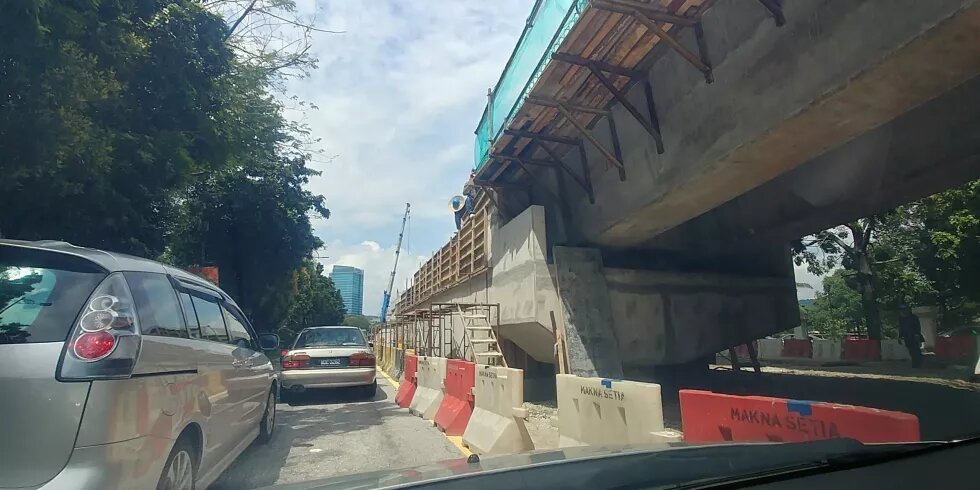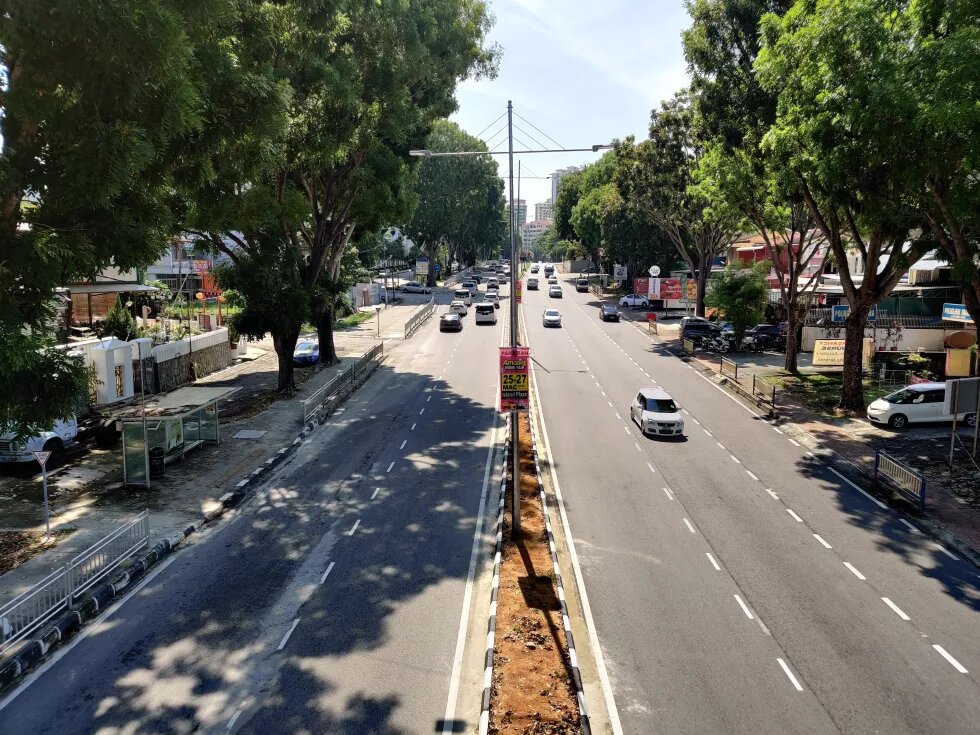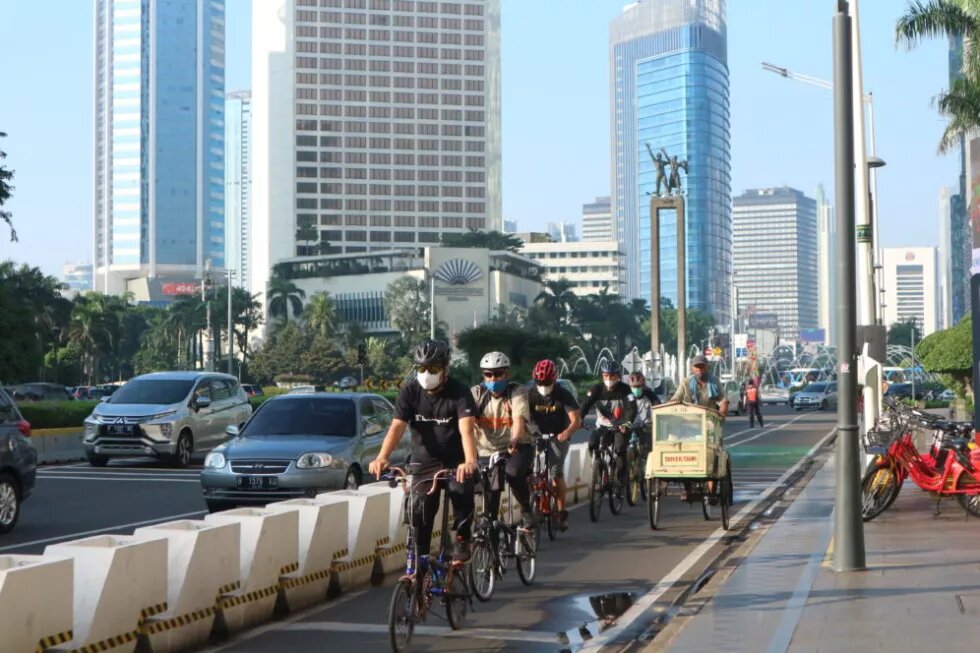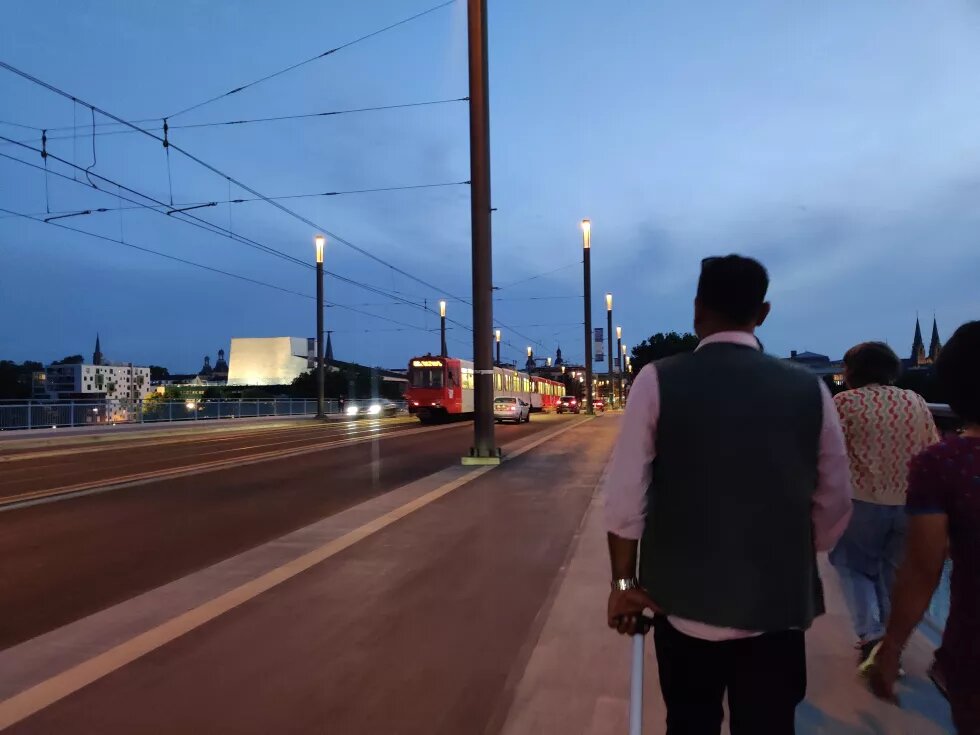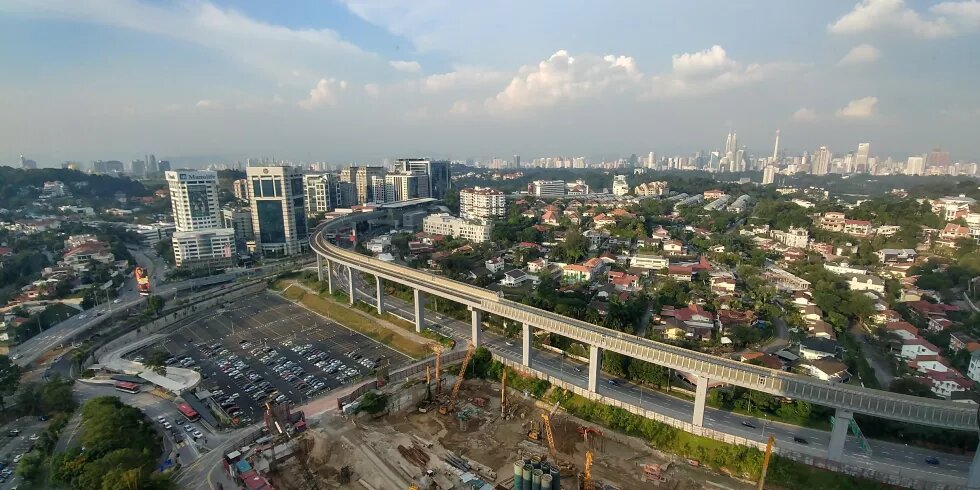
Undoubtedly, the COVID-19 pandemic has changed many things everywhere in the world. For better or worse, it has altered the social and economic aspects of life in unprecedented ways. But it has also allowed the time and space for nature to take a breather and heal - presenting us with inspiration and the opportunity to build back better. But if there is one conundrum that remains ever-present in the life of an urban Malaysian, it would be the insufferable traffic congestion. It did not only persist; it intensified.
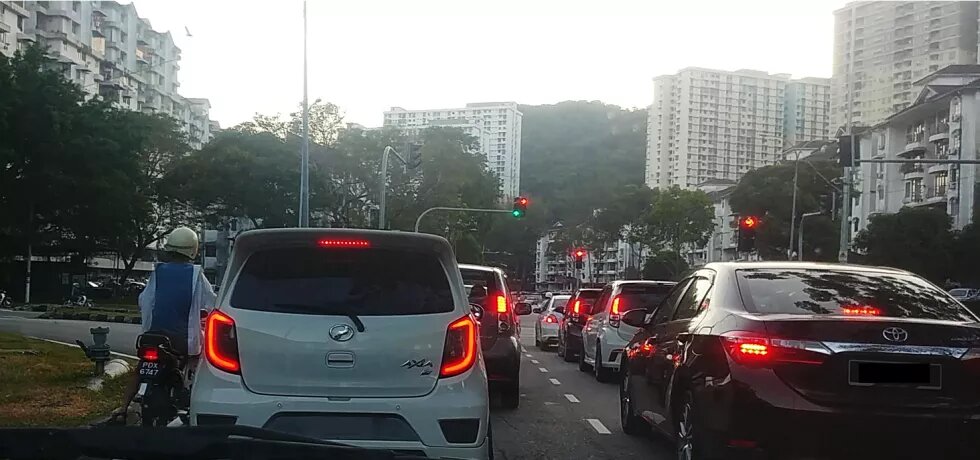
The more things change, the more they remain the same – or worse.
A typical commute to work, as some observed, is taking considerably longer than most people could recall from the pre-pandemic times. It is not unusual to hear that the time taken to drive to and from work has doubled today. Soon enough, it became increasingly clear that the traffic congestion had returned with a vengeance. This situation is significantly worse in Kuala Lumpur, the capital of Malaysia and its neighbouring state, Selangor.
Drivers at large have taken to social media platforms to vent their frustrations as they find themselves stuck in the endless traffic crawl - even if they have made a commendable attempt at leaving their house before sunrise. And at sundown, the same nightmarish journey repeats on their way home. Exasperated with nowhere to turn to, many sought to understand why their stress and fuel consumption levels are driving up.
From the outset, one may assume that easing the pandemic standard operating procedures has something to do with this. When the capacity limit at workplaces was abolished on the 1st of April, it also meant that the working from home (WFH) arrangement was no longer an option for many people. Since then, hordes of primarily single-occupancy vehicles (SOVs) have poured onto the once barren roads and highways, causing chokepoints of traffic congestion across the cities.
On a related note, some may believe that the number of drivers on the road has increased because many people are avoiding public transportations for fear of catching the COVID-19 virus from a fellow commuter. On the other hand, woeful images and videos of commuters helplessly overcrowding the train stations and tightly packed inside the coaches have emerged on Twitter (1). People have raised complaints about the unreliable arrival times (which causes overcrowding), constantly out-of-order escalators and elevators, and, more recently, a jammed carriage door that prevents commuters to alight at their station. This does not include the poorly connected, inaccessible and unsafe pedestrian walkways or crossings (if any) to get to train stations and bus stops seamlessly. When the city is not designed on a human scale, people have no choice but are forced to get around with their private vehicles. The big area of car parks that typically comes with the LRT/ MRT station is a visual demonstration of that. Commuters must drive their cars or ride their motorbikes to get on a train/bus, contributing to the traffic congestion.
Almost too soon, Prime Minister Ismail Sabri announced that the government would spend a whopping RM155 million in fare subsidies to offer a month of free rides for public transport operated by RapidKL and KTM Komuter (2). He was quoted to say that this will reduce the people's cost of living and ease traffic congestion. This was not received well by Transit Malaysia, a watchdog of public transportation in Malaysia, citing that the short-term fare subsidies do not ease the congestion problem and could have been better used to develop incremental, long-term, and sustainable solutions to improve the state of public transportation (3).
As for e-hailing services, passengers have also taken to social media to express their utter discontent. A short ride has become significantly overpriced, sometimes costing twice as much as the pre-pandemic rates (4). Most of these complaints were directed at the dominant e-hailing service provider, Grab Malaysia, which holds 70% of the country's market share of e-hailing rides. However, Grab Malaysia has clarified that the shortage of drivers caused by the pandemic is what's causing the sudden (and drastic) price fluctuations (5).
A flight of solutions or a plight of problems?
The simple task of getting from Point A to point B is more complicated than most people would seriously think. However, politicians continue to moot the idea of building more highways and roads to ease congestion, but people know this is a short-term solution, if at all. The less-than-intuitive concept of 'induced demand' is no longer a knowledge exclusive to transportation planning and engineering. Thanks to the transport experts and enthusiasts who have been earnestly chipping their opinions into the growing public discourse on traffic congestion, people have begun to understand that constructing more highways encourages new traffic growth. And over time, the highways and roads get congested again. It is a vicious cycle that consumes the already saturated urban space and gradually expands also to consume areas that should have been green spaces for the city.
Today, people are demanding systemic changes, an overhaul in how they move within the city. Simply adding or expanding highways just won't cut it anymore. Piecemeal solutions, as we know them, are not only insufficient; they can be an unnecessary waste of public money and time. But what about transport masterplans?
This plan has not only failed to be implemented but has also been dragged into unnecessary political debates that are not beneficial to the state transport users.
"I have seen several master plans in the past, but I have yet to see a transport master that has been implemented successfully," said Rosli Khan, an expert who has seen a fair share of transportation projects over 30 years in the transport industry and managed more than 100 consultancy projects in his career. He referred to the much-debated Penang Transport Master Plan (PTMP) as an example of a plan that went awry. "This plan has not only failed to be implemented but has also been dragged into unnecessary political debates that are not beneficial to the state transport users," said Rosli. In an opinion piece he wrote, he stated that politicians should stay out of the planning process and let the professionals handle the job as they are far from being the experts for such a significant undertaking. He added that politicians' roles should be limited to allocating and approving the state funds or budget for the project to be implemented. Even the task of sourcing the funding should be done by experts (6). As a dose of reality-check, Rosli said that "unless all these entities are restructured and run entirely by professionals, without any interference by politicians, I really can't see how we could progress to the next level or the desired level of services."
Traffic jams and a city on chronic pressure
The outcomes of poor public transportation services have far-reaching and long-term effects on the population. However, it is a constant and important reminder that the effects are felt differently across socioeconomic classes, where women, children, elderlies, the disabled and those in poor households are disproportionately bearing the brunt. As it is, the cities in Malaysia were not designed with these people in mind. It adopts a rather utilitarian perspective of planning, which does not articulate the diverse needs of society.
A study in 2016 found that in 2014, as high as 83.9% of all households in Malaysia owned at least a car.
A study in 2016 found that in 2014, as high as 83.9% of all households in Malaysia owned at least a car (7). While cars remain one of the top transport modes in the country, there is a love-hate relationship with cars, depending on who you talk to. But one thing for sure is that owning a car is a liability as far as monthly expenses are concerned. The costs of owning and operating a car are the price (and interest) of purchasing the car, the annual insurance payment, road tax payment, scheduled maintenance, petrol, car park costs and tolls – were estimated to set one back an average of RM1,347 and above each month (8). For perspective, this amount is about RM150 shy of Malaysia's minimum wage (RM1,500) and roughly 28% of a B40 family income (*B40 is the Bottom 40% of the Malaysian households that brings in a monthly income of below RM4,850/USD1100 per month). Households that do not own a car are at the mercy of public transportation. In more ways than one, this experience can be particularly harsher (and sometimes even dangerous) for women, children, elderlies and the disabled.
The financial burden of car ownership and the social cost of owning and not owning a car is just one of the many facets of the car-dependent society often not considered when calculating the socioeconomic cost of traffic congestion. And the fixation on looking solely at journey time/time saved as the key unit to measure the effectiveness of transportation has falsely made private vehicles the best mode of mobility. It has caused all the critical issues of urban inequality (i.e., affordability, accessibility, safety, mental health, and environmental externality) to fall through the cracks.
Staying grounded
Amid all these problems, people are taking active mobility more seriously, like cycling and walking – although this is also an uphill struggle.
"I commute by bike around my neighbourhood, combined with walking and taking the bus. I try to practice a car-light lifestyle, aside from when the weather conditions are not permitting, such as when it is raining. But I am cycling more these days, and it has changed how I saw the city," said Yasmin Lane, an urban planner based in Kuala Lumpur. "We are far from being cycling friendly. There is a lot of talking about this, but there is hardly any connected, wholistic action".
Being on the ground rather than behind the wheels has given Yasmin a good view of what a human-scale city design should look like. "There is a considerable amount of planning done by an active mobile person, such as the best routes to get there, how long will it take, whether it is shaded, which part of the road doesn't have fast traffic and so on. And if I am in a wheelchair, there are even more restrictions. If there is one thing lost in the planning or something unexpected happens, they are stuck." Yasmin also reflected on those forced to cycle to get around, such as foreign workers. "People have to put themselves in danger, as they have no choice, even if they have to cycle on a highway".
She added that those working in the built environment spectrum speak different languages and often don't even talk to each other. "This is why I go into planning, and I learned that in Malaysia, it is technocratic and bureaucratic – which added a challenge to town planning. We are not doing right by not including everyone in the conversation and continuing the expert-led and top-down approach. It is made to seem neutral, that there aren't biases in their design, but everyone puts their biases into their decision. Design is a major challenge, and we want to ensure that we don't make the challenges worse than they are now."
Moving people through people movement
Suffice to say; the city is mainly optimized to move cars, not people. The city streetscape would have looked very different if it were to move people. But things can be different, and some of these changes are indeed done from the ground up, as Indonesia's Institute for Transportation and Development Policy (ITDP) has shared.
"In Jakarta, grassroots movements from local communities, civil advocacy groups, and NGOs often become pioneers of sustainable transportation movements, catalyzing the development of supporting policies and scaling-up measures from the government. So many examples where local communities and NGOs succeeded in changing policies; one of them is when the Jakarta Department of Transportation, which is overseen by the Governor of Jakarta (head of the municipality), decided to create a pop-up bicycle lane. But the police (supported by the central government) removed the cones to open the lane up for vehicular traffic."
"Largely due to political pressure from public support of cycling, a compromise was reached: to open the bicycle lane for commuters from 6-8 am and 4-6 pm. At other hours, the lane is reverted to vehicular traffic. Despite being unfair to the large majority of Jakartans who commute outside these hours, this compromise is still challenged. The police continued to act independently from Jakarta Transport Department and continued to remove cones during the allocated cycle lane hours. While there is public support for the cycle lane, the lack of municipal jurisdiction over the police makes enforcement hugely difficult. To defend the pop-up bike lane, ITDP Indonesia and the largest bike movement organization in Indonesia, B2W Indonesia, made a human barrier along the pop-up bike lane corridor to prevent cone removal by the police during the "commuters' hours". As a result, the pop-up bike lane is now becoming Jakarta's first permanent protected bike lane." (Read more here)
From this success story, could public pressure have the same effect in Malaysia? It might cause a ripple to a varying degree, but the change we want to see may be more complicated to achieve than expected.
The road to governance and information
Rosli Khan attributed the problems in Malaysia's public transportation planning to the lack of oversight from a leading governmental agency, the conflicting roles and structural defects. "A new organizational structure is needed, one which separates the roles of the government as a regulator and that of the operator. Currently, these roles are not clearly defined, especially those entities under the Ministry of Finance (Incorporated). Are they formed to undertake public services as a nonprofit organization?" He said that the lack of transparency and accountability in the way public transportation planning, construction and budget is detrimental to the country, where the biggest losers are the taxpayers and the public. (Read more here)
In Jakarta and most Indonesian cities, there is a strong collaboration between various public and private stakeholders. The local Transport Agency plays an essential role in managing the traffic demand given their mandate is to implement traffic management strategies and develop public transport plans that the public transport operators then implement. Meanwhile, the Public Works Agency is responsible for revitalizing pedestrian infrastructure and facilities along the sidewalk. "Critical in ensuring coordination between these two crucial agencies is the Deputy of Economic and Financial Affairs and Deputy of Development, who head the two agencies as well as other local institutions," explained ITDP Indonesia.
Meanwhile, for the private sector, public transport operators in Jakarta (Transjakarta, LRT, MRT) are instrumental in providing high-quality services in compliance with the level of service standards stipulated by the Transport Agency to attract more people to using transit. Other regional-owned companies, such as PT Jaklingko Indonesia and PT MITJ, established to facilitate fare and physical public transport integrations, respectively, also play key roles in enabling public transport system integration in Jakarta.
The talk about governance brings to attention another one of Malaysia's traffic conundrums: the lack of data to make informed decisions.
Data is a blanket response to the problem.
Hence, the first step towards a solution is to collaborate and collect data, especially disaggregated data,
to understand equity and provide services that meet specific needs.
"Data is a blanket response to the problem. Hence, the first step towards a solution is to collaborate and collect data, especially disaggregated data, to understand equity and provide services that meet specific needs," said Yasmin. "Participatory data, which involves different ways of collecting data, is also key, including how we analyze and act on it. Malaysian cities are missing a metropolitan authority governing the city, a politically neutral body that oversees this in an integrative manner. This means that biking, walking, and bus are not managed as separate modes of transportation that function exclusively from one another. For example, the bus schedules must correspond with the train times for seamless connectivity".
Does a city shape the roads, or do the roads shape a city?
With all this attention on cars, roads, public transportations, cycling, walking and the likes – are we missing the forest for the trees? It is pertinent also to take a few steps back to unpack the bigger picture where this traffic problem unfolds: the city's design.
"Urban planning and transportation planning are two sides of the same coin that influence each other. City densification enables shorter journeys, which can be a huge motivator for people to start walking and cycling. By having activities and residents concentrated in the same areas, it is easier for city planners to prioritize non-motorized transport facility improvements and plan effective transit systems," said ITDP Indonesia.
Transport planning needs to be human-centric and responds to the needs and aspirations of everyday people.
The false solutions to transportation often ignore the aspect of the built characteristics of the city and its embedded social milieu. As echoed throughout this article, transport planning needs to be human-centric and responds to the needs and aspirations of everyday people. Do we plan transportation to complement the physical patterns and meaningfully enrich people's socioeconomic life in the city? Or do we fracture the city with more roads to make way for more cars each year to endlessly weave through the city and generate more profit through unsustainable consumption? What we are seeing today are mostly grandiose infrastructure constructions or vanity projects disguised as active mobility initiatives that are often poorly designed and maintained. We also must acknowledge that city-making is highly political – where the power dynamics are uneven and interests compete between the public and developers, all of which add complexity to the deceivingly simple problem of getting from Point A to Point B.
Driving the message across
Recently, I was in Bonn, Germany, to attend the UNFCCC climate talks, and I had the chance to explore the city in the evenings after work. Personally, the city's most memorable character has got to be its multimodal mobility options, not just on the road but on the bridge as well. The Kennedy Bridge, as it is called, over the Rheine River was purposefully designed to be a non-contesting, shared road space between the trams, buses, cars, bicycles, e-scooters, and pedestrians, all at once. To top it off, on each side of the bridge - rows of solar panels were installed from end to end.
It then struck me that every transportation and mobility challenges should begin by asking a simple, hypothetical question: "how many people can we get across the river in as many ways as possible by using just a bridge?" Guided by our local country/state context as the foundation, this can become a guiding principle towards optimizing every mobility infrastructure or project to be put in place. Fundamentally, it should be fit for purpose – that is, to serve the mobility needs of the community, incrementally improve to respond to the changes in population trends adeptly, and do the least harm possible to the environment, biodiversity and the climate.
When asked whether Malaysia is heading towards building more resilient transportation – in view of the soaring fuel prices and climate change, Rosli said that the country is far from that direction. He said that in developed countries, public transportation is well patronized, and they have achieved the target/ reached a balanced ratio between private transport and public transport (60:40). "We are very far from that target. We are still building more highways, which they don't. Besides, we also don't have the technology to undertake the big shift; we don't have EV plans in place, our electric power generation still very much depends on coal-powered, our recycling is a mess, and our oil consumption is still high."
Transportation is the second-highest emissions source in Malaysia. A study found that energy efficiency improvements in Malaysia's transport sector cannot reduce CO2 emissions, particularly in the short-run (9). In the reality of the climate crisis, this is terrible news. The IPCC scientists have sounded the alarm, stating that for the world to stay on track to limit earth's warming to 1.5°C, greenhouse gas emissions need to be cut by 45% by 2030, compared to 2010 levels (10). Unbeknownst to many, we have entered code red for humanity. The frequency and intensity of heat extremes, ocean warming and acidification, heavy rainfall and snow, agricultural and ecological droughts and intense tropical cyclones will worsen and disrupt every aspect of human life imaginable, from public health to food and water security and the economy (11). Nothing comes out of chronic traffic congestion that is possibly good for the well-being of society and the planet. The solutions are available, but do the people want the changes badly enough? And is there political will to see this through?
As they say, if we want to go fast, go alone.
But if we want to go far, we must go together.
The sooner we understand the gravity of the problem and take real actions (not false solutions) that are commensurate with the scale and complexity of the issue, the better we will all be. And this must be committed to how the entire urban space is sustainably, equitably, and collectively managed and shared. As they say, if we want to go fast, go alone. But if we want to go far, we must go together.
___
Evelyn Teh is a Senior Researcher at Third World Network. She does research on the topic of city design, urban studies, socioeconomic issues, environmental impact assessment, marine environmental policy, waste management, and climate change impacts, vulnerability and adaptation.
The views expressed in this article are not necessarily those of Heinrich Böll Stiftung
References:
- https://twitter.com/mathanamuhilan/status/1536508903290474496
- https://www.theedgemarkets.com/article/pm-apart-rapidkl-ktm-komuter-klang-valley-also-free-charge-one-month-thursday
- https://twitter.com/transitmy/status/1539081275285221376
- https://www.malaysiakini.com/news/621509
- https://www.nst.com.my/news/nation/2022/05/799065/grab-shortage-drivers-caused-sudden-price-fluctuations
- https://www.freemalaysiatoday.com/category/opinion/2021/12/05/penang-lrt-and-how-politicians-cause-the-rakyats-suffering/
- http://www.krinstitute.org/assets/upload/KRI_State_of_Households_II_090916.pdf
- http://www.krinstitute.org/kris_publication_Urban_Transportation_1.aspx
- https://www.frontiersin.org/articles/10.3389/fenvs.2021.774164/full
- https://www.ipcc.ch/sr15/chapter/spm/
- https://news.un.org/en/story/2021/08/1097362
